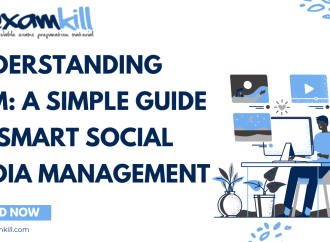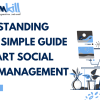Changes in Mortgage Rates and Their Impact on the Housing Market The housing market is a complex and dynamic sector influenced by numerous factors, with mortgage rates being one of the most significant. Mortgage rates affect home affordability, buying behavior, and overall market stability. This article explores the changes in mortgage rates over recent years,
Changes in Mortgage Rates and Their Impact on the Housing Market
The housing market is a complex and dynamic sector influenced by numerous factors, with mortgage rates being one of the most significant. Mortgage rates affect home affordability, buying behavior, and overall market stability. This article explores the changes in mortgage rates over recent years, their underlying causes, and their subsequent impact on the housing market. Additionally, it includes an analysis table summarizing key points and a comparative table contrasting different periods of mortgage rate changes.

Pexels.com
Understanding Mortgage Rates
Mortgage rates are the interest rates charged on a home loan. They can be fixed, remaining the same for the loan term, or adjustable, changing periodically based on an index. Several factors influence mortgage rates, including the federal funds rate, economic conditions, inflation, and the bond market.
Factors Influencing Mortgage Rates
- Federal Funds Rate: Set by the Federal Reserve, this rate significantly impacts mortgage rates. When the Federal Reserve raises or lowers the federal funds rate, mortgage rates tend to follow.
- Economic Conditions: During periods of economic growth, higher demand for loans can push mortgage rates up. Conversely, in economic downturns, mortgage rates often decrease to stimulate borrowing.
- Inflation: Higher inflation typically leads to higher mortgage rates as lenders need to maintain their profit margins.
- Bond Market: Mortgage rates are often tied to the yields on 10-year Treasury bonds. When bond yields rise, mortgage rates tend to increase as well.
Recent Trends in Mortgage Rates
Pre-Pandemic Era (2010-2019)
During the pre-pandemic era, mortgage rates experienced moderate fluctuations. Following the Great Recession, the Federal Reserve maintained low-interest rates to stimulate economic recovery. As a result, mortgage rates were relatively low, hovering between 3.5% and 4.5%. This period saw increased home affordability and a robust housing market.
Pandemic and Post-Pandemic Period (2020-2023)
The COVID-19 pandemic brought unprecedented economic challenges. In response, the Federal Reserve slashed interest rates to near-zero levels to support the economy. Consequently, mortgage rates fell to historic lows, with averages below 3% for a 30-year fixed-rate mortgage in 2020 and 2021. This sharp decline in rates led to a surge in home buying and refinancing activities.
Recent Increases (2023-2024)
As the economy recovered and inflationary pressures mounted, the Federal Reserve began raising interest rates in 2022. By mid-2023, mortgage rates had risen significantly, reaching around 6-7%. This increase has started to cool down the previously hot housing market, affecting home affordability and buyer behavior.
Impact of Changing Mortgage Rates on the Housing Market
Home Affordability
One of the most direct impacts of changing mortgage rates is on home affordability. Lower rates reduce monthly mortgage payments, making homes more affordable for buyers. Conversely, higher rates increase monthly payments, reducing the purchasing power of potential buyers.
Analysis Table: Impact on Monthly Payments
| Mortgage Rate (%) | Loan Amount ($) | Monthly Payment ($) |
| 3.0 | 300,000 | 1,264 |
| 4.0 | 300,000 | 1,432 |
| 5.0 | 300,000 | 1,610 |
| 6.0 | 300,000 | 1,799 |
| 7.0 | 300,000 | 2,000 |
Buying Behavior
Changes in mortgage rates significantly influence buying behavior. When rates are low, more people can afford to buy homes, leading to increased demand. This often results in higher home prices due to competition among buyers. Conversely, when rates rise, demand tends to drop, potentially leading to a slowdown in price growth or even price declines.
Refinancing Activity
Refinancing activity is also sensitive to mortgage rate changes. Homeowners typically refinance their mortgages to take advantage of lower rates, reducing their monthly payments or shortening the loan term. During periods of rising rates, refinancing activities decline as the cost-benefit diminishes.
Housing Supply and Demand
The overall housing supply and demand dynamics are affected by mortgage rates. Low rates boost demand, sometimes leading to housing shortages if supply cannot keep up. On the other hand, higher rates can cool down demand, potentially leading to an increase in housing inventory and longer time on market for homes.
Comparative Analysis
Comparative Table: Mortgage Rates and Housing Market Indicators
| Period | Average Mortgage Rate (%) | Home Price Growth (%) | Housing Inventory | Refinancing Activity |
| 2010-2019 | 3.5 – 4.5 | Moderate (3-5% annual) | Stable | Moderate |
| 2020-2021 | Below 3.0 | High (8-10% annual) | Low | High |
| 2022-2023 | 5.0 – 6.0 | Slowing (2-4% annual) | Increasing | Decreasing |
| 2023-2024 | 6.0 – 7.0 | Low (1-2% annual) | High | Low |
Introduction to Mortgage Rate Changes
Mortgage rates play a crucial role in shaping the housing market, affecting both buyers and sellers. A change in interest rates can have significant repercussions on home affordability, demand, and the overall health of the real estate sector. Mortgage rates are determined by various factors, including economic conditions, inflation, and monetary policy. When the Federal Reserve adjusts its benchmark interest rate, it often leads to changes in mortgage rates, influencing the broader housing market. Understanding how fluctuations in mortgage rates impact the housing market is key to comprehending the dynamics of home buying and selling.
Impact on Homebuyer Affordability
One of the most immediate consequences of changing mortgage rates is the effect on homebuyers’ affordability. When mortgage rates rise, the monthly payment for a loan increases, which can price many potential buyers out of the market. For example, if interest rates go from 3% to 5%, buyers may find themselves facing significantly higher monthly payments for the same home. This reduces their purchasing power and may lead to fewer people entering the housing market. Conversely, when mortgage rates decrease, buyers benefit from lower monthly payments, potentially allowing them to afford more expensive homes.
Influence on Housing Demand
Mortgage rates have a direct correlation with housing demand. As interest rates rise, the cost of borrowing increases, leading to reduced demand for homes. Potential buyers are less likely to take on a mortgage when the rates are high, resulting in a slowdown in housing transactions. On the other hand, when mortgage rates fall, demand for homes typically increases as buyers are motivated to lock in lower financing costs. This increased demand can lead to a more competitive housing market, with multiple offers on properties and rising home prices in certain areas.
Effects on Home Prices
The fluctuation in mortgage rates can also affect home prices, with a general inverse relationship between rates and prices. When mortgage rates rise, fewer buyers can afford homes, which can lead to a reduction in home prices. Sellers may need to lower their asking prices to attract buyers, particularly in a market where interest rates are high. Conversely, lower mortgage rates can stimulate demand, leading to bidding wars and ultimately pushing home prices higher. However, this relationship can vary depending on other factors, such as local economic conditions and housing supply.
Long-Term Market Trends and Investor Behavior
Changes in mortgage rates can also influence long-term housing market trends and the behavior of real estate investors. Higher rates may lead to a cooling of the market, where investors are less likely to purchase properties due to the higher cost of financing. In contrast, lower rates can encourage real estate investments, as the cost of capital decreases. Investors may see an opportunity to purchase properties with better returns on investment, driving up competition in the housing market. Over time, sustained low or high rates can reshape housing markets, influencing construction activity, housing inventories, and overall market dynamics.
Conclusion
Mortgage rates are a critical determinant of the housing market’s health and stability. The recent fluctuations in mortgage rates, driven by economic conditions and policy changes, have had profound effects on home affordability, buying behavior, and overall market dynamics. Understanding these impacts can help policymakers, industry professionals, and consumers make informed decisions in a constantly evolving market.
As mortgage rates continue to respond to economic indicators and monetary policies, their future trajectory will remain a key factor in shaping the housing market. Continuous monitoring and analysis of these trends are essential for anticipating market shifts and preparing for the implications on both a macro and micro level.






















